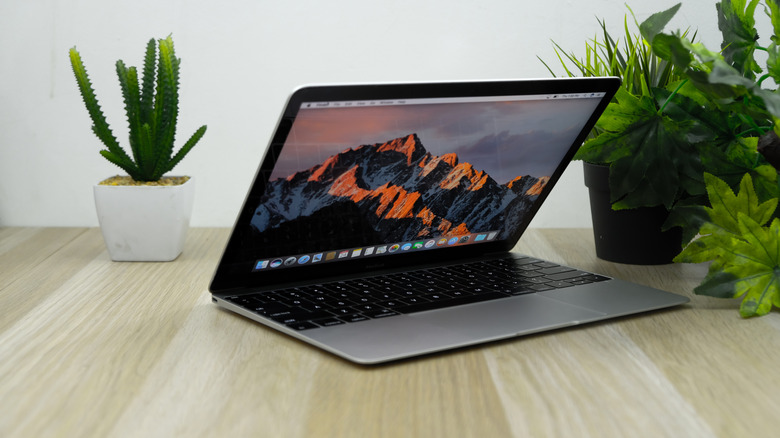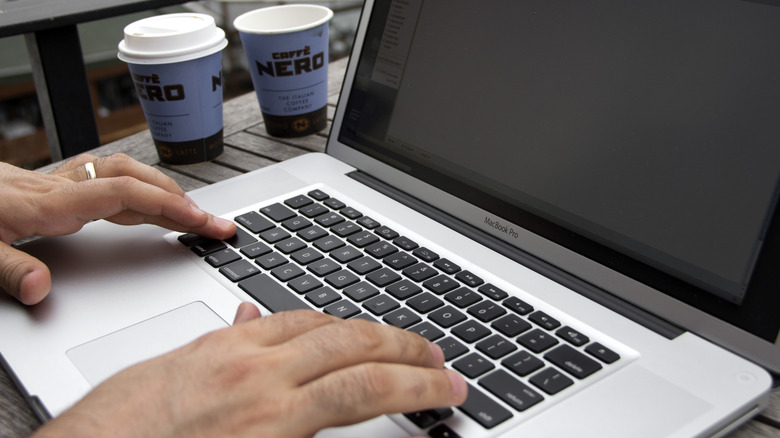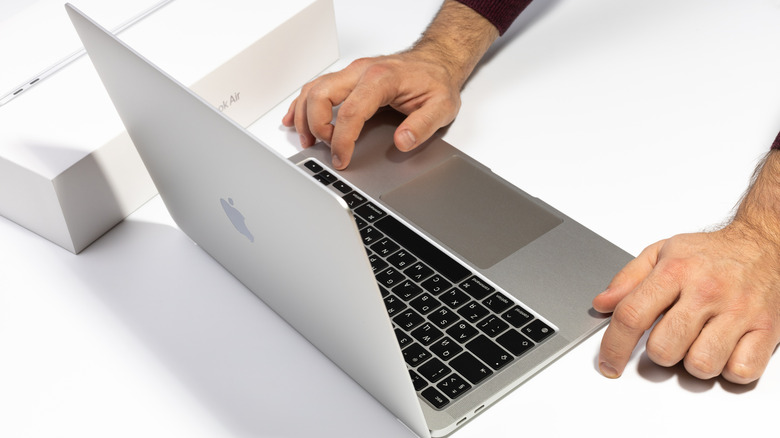Here's How To Reset The SMC On Your MacBook
Generally speaking, MacBooks are some of the most reliable laptops on the market. For example, MacBook Pros are known for their longevity, with some lasting for more than a decade after the original purchase. Of course, your mileage will vary, but that doesn't take away from the fact that when you buy a MacBook, you know you're getting a solid computer. However, that doesn't mean things won't go wrong from time to time. One issue MacBook owners sometimes run into is that their device suddenly refuses to turn on, the battery won't charge, the fan runs loudly for no reason, it overheats, or the webcam stops working. If a normal restart doesn't fix the issue, you might be dealing with a hardware-level glitch, and resetting your SMC can often help.
Your MacBook's SMC, or System Management Controller, manages low-level hardware functions on Intel-based models, like power, battery charging, sleep settings, fan speed, and even things like the keyboard backlight and LED indicators. When these systems start malfunctioning, resetting the SMC can help get things back on track. If you have a MacBook with Apple Silicon, like the MacBook Air M4, your computer doesn't have a separate SMC chip. However, you can still reset its hardware management system using a simple shutdown and restart process. While it's technically not an SMC reset, it works the same way and can help get your MacBook back to normal if something goes wrong.
How to reset the SMC on Intel-based MacBooks
Whether you've revived an old Mac or are trying to get the most out of your Intel-based one before upgrading to a new model, your MacBook might need an SMC reset if it displays any of the following symptoms: shutting down out of the blue, inaccurate battery readings, getting too hot, USB or Bluetooth issues, and erratic sleep or wake behavior. In other words, if your MacBook is acting strangely and you've already ruled out software problems, your SMC could be the cause. The steps you follow to reset an Intel-based MacBook's SMC will vary slightly depending on the model and whether it has Apple's T2 Security Chip. You'll start the process by shutting down your Mac completely.
Follow these steps to reset a MacBook with the T2 chip (2018–2020):
Option 1: Quick reset
- Press and hold the power button for 10 seconds, then release it.
- Wait a few seconds and press the power button again to turn on the Mac.
Option 2: Full SMC reset (if the quick reset doesn't work)
- Shut down your Mac.
- Press and hold Control (left) + Option (left) + Shift (right) for 7 seconds.
- While holding those keys, also press and hold the power button for another 7 seconds.
- Release all keys, wait a few seconds, and press the power button to turn the Mac back on.
If you have an older Intel-based MacBook with no T2 chip, start by shutting down your MacBook, then press and hold Shift (left) + Control (left) + Option (left) + power button for 10 seconds. Release the keys, wait a few seconds, and then turn your MacBook back on.
How to reset hardware management on Apple Silicon MacBooks
If you own a MacBook with Apple Silicon, it doesn't include a separate SMC chip like the ones found in Intel-based models. Instead, these computers use an integrated system that handles the same low-level functions, which means there's no SMC to reset. Still, if you're experiencing issues like your battery not charging correctly or the fan running louder than usual, you can reset the system. While you may debate whether the MacBook Air or MacBook Pro is best for your laptop needs, both models with Apple Silicon can benefit from a quick reset when something isn't working right.
Follow these steps to reset the hardware management system on an Apple Silicon MacBook:
- Shut down your MacBook completely.
- Wait at least 30 seconds.
- Press the power button once to turn it back on.
That's all there is to it. This simple process helps clear out hardware-related glitches and can get your MacBook back up and running normally again. It's a good first step if you're dealing with strange behavior and standard troubleshooting hasn't helped.


